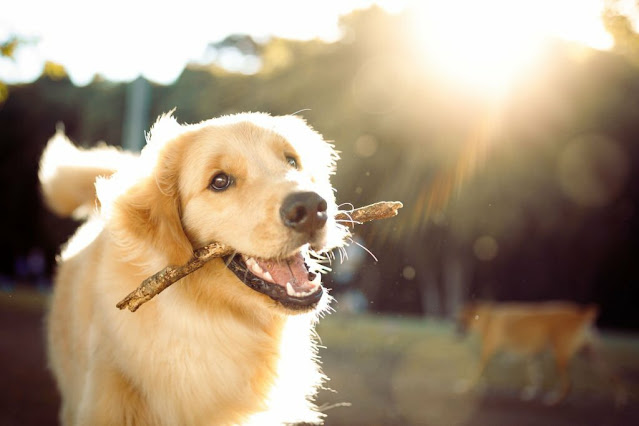What grooming routine is best for my dogs coat type?
Introduction
A well-groomed dog is a happy dog." - Unknown
As pet owners, we strive to provide the best care for our furry companions, and proper grooming is an essential part of their overall well-being. A crucial aspect of grooming is understanding our dog's unique coat type and tailoring our routine to suit their specific needs. Whether your furry friend rocks a curly coat or boasts a sleek and shiny mane, this comprehensive guide will equip you with the knowledge to develop the perfect grooming routine for your beloved pup.
Main Content
Understanding Coat Types
Before diving into grooming techniques, it's vital to identify your dog's coat type. Dogs possess various coat types, including smooth, curly, wired, long, and double coats. Each coat type requires specialized care, catering to their specific characteristics, textures, and densities. Let's explore some popular coat types and the grooming routines ideal for each:
1. Smooth Coats
Smooth-coated dogs have short, sleek fur lying close to their bodies, including breeds like Boxers, Dalmatians, and Doberman Pinschers. Their low-maintenance coats require regular brushing to remove loose hair and maintain their natural shine. Consider the following grooming regime for smooth-coated dogs:
Brush your dog's coat weekly using a grooming mitt or soft-bristle brush to remove loose hair.
Utilize a deshedding tool during shedding seasons to minimize hair around the house.
Bathe your dog only when necessary to preserve their skin's natural oils.
2. Curly Coats
Curly-coated dog breeds, such as Poodles, Bichon Frisés, and Portuguese Water Dogs, boast bouncy and tight curls that require special attention. These coats are more prone to matting and tangling, necessitating a meticulous grooming routine:
Daily brushing using a slicker brush to prevent matting and remove debris.
Consider professional grooming every 4-6 weeks to ensure proper maintenance.
Regularly trim the coat to maintain a tidy appearance and prevent excessive matting.
3. Wired Coats
Breeds like Scottish Terriers, Wire Fox Terriers, and Border Terriers exhibit wired coats consisting of coarse, dense, and hard hair. These breeds possess a rough exterior layer paired with a soft undercoat. To keep their wiry coats looking fantastic, follow these steps:
Hand-stripping by plucking out dead hairs to encourage new growth and maintain texture.
Regular brushing using a slicker brush to prevent matting.
Trimming the hair around the face, ears, and paws to ensure cleanliness and prevent irritation.
4. Long Coats
Long-coated dog breeds such as Shih Tzus, Maltese, and Afghan Hounds boast luxurious, flowing locks that require extra attention. Maintaining a long coat necessitates a comprehensive grooming routine:
Daily brushing using a pin brush or comb to prevent tangles and mats.
Regularly check for debris hiding within their long fur, especially in feathered areas.
Schedule professional grooming appointments to keep the coat trimmed and tidy.
5. Double Coats
Double-coated breeds like Siberian Huskies, Golden Retrievers, and Samoyeds possess an outer coat paired with a soft and insulating undercoat. To keep their coats healthy and beautiful, follow these grooming practices:
Regular brushing to remove loose fur, especially during shedding seasons.
Pay extra attention to the undercoat, using an undercoat rake or deshedding tool.
Avoid shaving your double-coated dog's fur as it impairs their natural insulation.
Tips for a Perfect Grooming Routine
Now that you understand the grooming needs specific to your dog's coat type, let's delve into some general tips to ensure a perfect grooming routine regardless of their fur's texture and length:
1. Ears and Eyes
Use a dog-specific ear cleaner and gentle cotton balls or pads.
Keep an eye on your dog's eyes, especially for tear stains and discharge. Use a damp cloth or dog tear stain remover to keep them clean.
2. Nails and Paws
Trim your dog's nails regularly, being cautious not to cut into the quick. If you prefer not to do it yourself, consider professional nail trims.
Clean their paws after walks to remove any debris and prevent infections.
3. Dental Health
Provide dental chews or treats to support oral health and reduce tartar buildup.
Conclusion
Grooming your dog to perfection requires tailoring the routine to their specific coat type. By understanding the intricacies of your furry friend's fur, you can provide the best care to keep their coat healthy, shiny, and beautiful. Remember, regular grooming not only enhances your dog's appearance but also strengthens the bond between you and your four-legged companion. So, find the perfect brush, explore professional grooming options, and embrace the joy of pampering your pup with a tailor-made grooming routine.
Check out these resources for further insights on dog grooming:

